
Ascidia is a genus of tunicates in the family Ascidiidae.

Pyura is a large genus of sessile ascidians that live in coastal waters at depths of up to 80 m (260 feet). Like all ascidians, Pyura are filter feeders. A few species, including Pyura chilensis are commercially fished.

Microcosmus is a genus of tunicates in the family Pyuridae, containing the following species:

Clavelina is genus of sea squirts, containing the following species:

Stolidobranchia is an order of tunicates in the class Ascidiacea. The group includes both colonial and solitary animals. They are distinguished from other tunicates by the presence of folded pharyngeal baskets. This provides the etymology of their name: in ancient Greek, στολίς, ίδος means the "fold" of a cloth. Stolidobranchian sea squirts are also characterized by the complete absence of an abdomen. The abdominal organs of other tunicates are instead located to one side of the pharyngeal basket in this group.
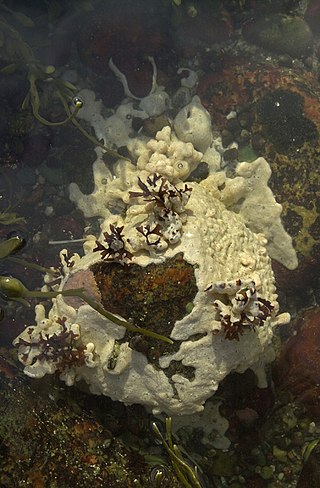
Aplousobranchia is an order of sea squirts in the class Ascidiacea, first described by Fernando Lahille in 1886. They are colonial animals, and are distinguished from other sea squirts by the presence of relatively simple pharyngeal baskets. This provides the etymology of their name: in ancient greek, ἁ.πλοος-ους (ha.ploos-ous) means "simple". The posterior part of the abdomen contains the heart and gonads, and is typically larger than in other sea squirts.

Aplidium is a genus of colonial sea squirts, tunicates in the family Polyclinidae. There are about 188 species in the genus found in shallow waters around the world.

Phallusia is a genus of tunicates of the family Ascidiidae, which includes the following species:
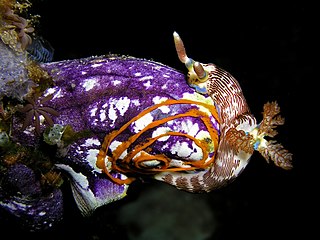
Polycarpa is a genus of ascidian tunicates in the family Styelidae.

Styelidae is a family of ascidian tunicates.
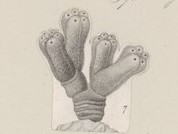
Synoicum is a genus of colonial sea squirts, tunicates in the family Polyclinidae.
Aplidiopsis is a genus of colonial sea squirts, tunicates in the family Polyclinidae.
Molguloides is a genus of marine tunicates.
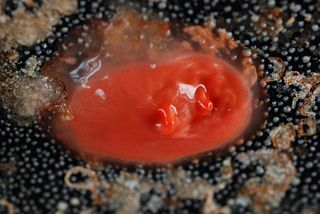
Cnemidocarpa is a genus of ascidian tunicates in the family Styelidae.
Dicarpa is a genus of ascidian tunicates in the family Styelidae.
Monandrocarpa is a genus of ascidian tunicates in the family Styelidae.
Stolonica is a genus of ascidian tunicates in the family Styelidae.
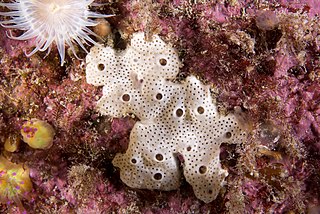
Lissoclinum is a genus of tunicates.
Euherdmannia is a genus of tunicates. It is the only genus in the family Euherdmaniidae in the order Aplousobranchia.

Polysyncraton is a genus of tunicates belonging to the family Didemnidae.












